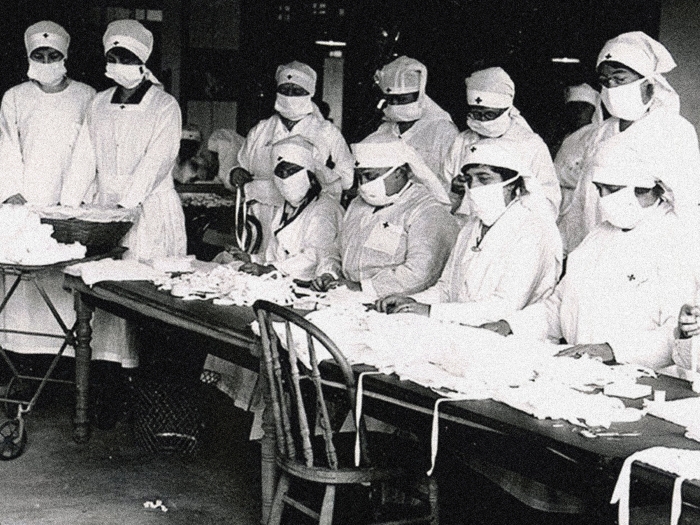How to tell the difference when you’re feeling ill—and what to do next
9:35 AM
Author |

This article was originally posted on October 21, 2020, and was updated on October 17, 2023.
Editor’s note: Knowledge about COVID-19 is ever-evolving. For historical purposes, older articles about the coronavirus will remain on Health Lab, but may not reflect the latest news about the disease. For the most up-to-date information, search Health Lab’s most recent stories on the topic and visit the Centers for Disease Control and Prevention’s informational page on SARS-CoV-2.
You wake up one morning feeling under the weather.
While in previous years you may have chalked up a sore throat or body aches to a run-of-the-mill cold or flu, the addition of COVID to the slate of circulating illnesses adds a new element of concern to getting sick.
"There is significant overlap between symptoms of influenza and COVID," said Laraine Washer, medical director of infection prevention and epidemiology at Michigan Medicine.
"Both can present with fevers, chills, sore throat, cough, muscle/body aches, fatigue and headache." Here, Washer offers advice to follow during a changed “cold and flu” season.
Do you have a cold, the flu or COVID?
Cold symptoms are typically mild and the common cold tends not to be associated with fever or headache. Congestion or a runny nose is normal for the common cold and would be uncommon as the only symptom for influenza.
Congestion/runny nose can be a symptom of a COVID infection and might be the only symptom in mild cases.
Flu symptoms often come on quickly.
COVID symptoms can be of rapid or more gradual onset. Says Washer, one symptom that used to be more unique to a COVID infection was the loss of taste or smell, but that has become less common with newer variants of SARS-CoV2.
Should you get a test?
Washer says that in many settings, the only way to tell the difference between COVID and influenza is by testing.
"The differentiation can be very important as there are antiviral medications that can be used for either COVID or flu," she explained.
If you have a fever and chills, a new cough or new shortness of breath, you should stay home and arrange to be tested for COVID or use an at-home test, especially if you are at higher risk for complications, including people over 65, people with underlying medical conditions and those who are immunocompromised.
You may also wish to test for symptoms of new upper respiratory symptoms (congestion, runny nose, sore throat) especially if you will be around other individuals who may be at risk for severe COVID infection.
You’re sick! What do you do now?
One of the most important things to do when sick is to rest and try to avoid spreading your infection to others, whether it be a cold, the flu or COVID:
- Stay home if possible
- Wash your hands often
- Don’t share personal items like cups, food, etc.
- Wear a mask around other people until your symptoms go away
- Ventilate your space
Should I call the doctor?
If you have any chronic medical conditions, are over the age of 65, or are not vaccinated, you are at higher risk of getting a severe COVID infection and should call your doctor.
Call your doctor for a fever that does not go down with fever reducing medicine (do not use aspirin as it is contraindicated in influenza) or any severe symptoms or symptoms that get worse over time.
Should I go to the emergency room?
Go the emergency department if you have chest pain or pressure, confusion, difficulty breathing or blue discoloration to your lips or face.
And while social distancing and masking reduced spread of respiratory viruses during the early part of the pandemic, fewer people are using these public health measures.
Getting vaccinated and checking your local levels of flu and COVID circulation to make decisions about attending crowded events are key to staying healthy.
The flu shot and COVID vaccine
Getting a flu shot this year is particularly important to reduce the potential for a twin epidemic of influenza and COVID, which could further overwhelm the healthcare system.
The flu and COVID vaccines are updated to better match circulating strains.
The Centers for Disease Control and Prevention recommend that you get the flu shot before the end of October, but it's never too late to get one. Plus, if you haven't gotten your COVID vaccine yet, you can get one at the same time as your flu shot.

Explore a variety of health care news & stories by visiting the Health Lab home page for more articles.

Department of Communication at Michigan Medicine
Want top health & research news weekly? Sign up for Health Lab’s newsletters today!





